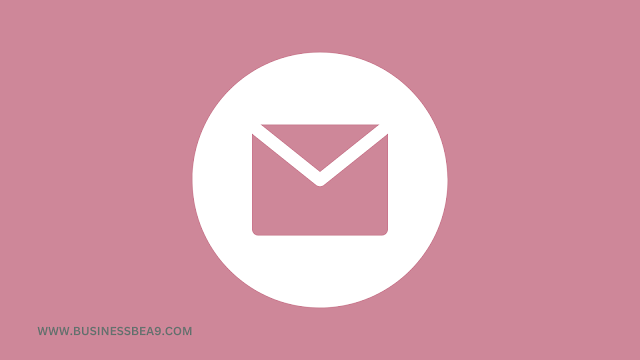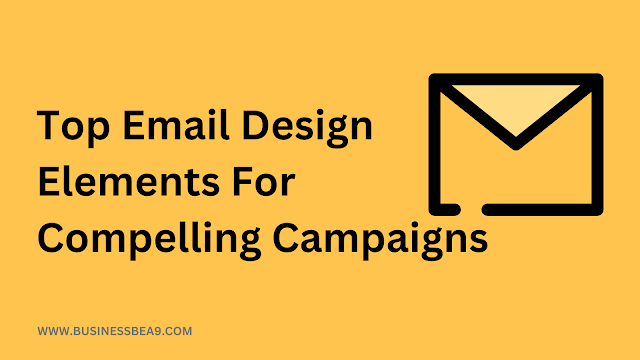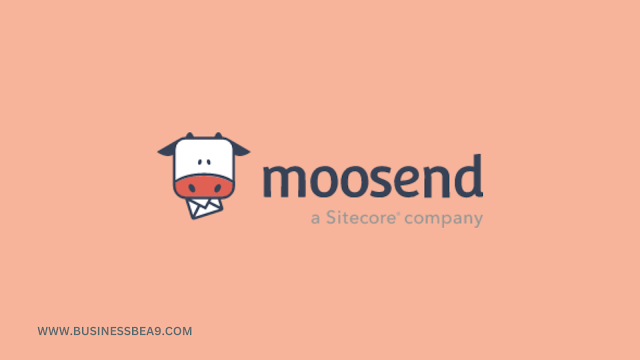If you're familiar with the significance of email marketing and eager to create impactful campaigns, you've come to the right place!
In this article, we will learn about the comprehensive guide to email design and its importance in our marketing campaigns.
This comprehensive guide to email design provides all the information necessary to craft eye-catching email campaigns that drive conversion rates upward.
Email design refers to the visual layout and appearance of an email, including elements such as color, images, typography, and spacing. A well-designed email can help increase engagement and conversions, as it makes the content more appealing, easy to read, and memorable. Key elements of effective email design include:
- A clean and simple layout
- A consistent color palette
- Easy-to-read fonts
- Relevant images and graphics
- Personalization and customization
- Mobile responsiveness
- Accessibility considerations
- A clear call-to-action
By incorporating these elements into your email design, you can create visually appealing and effective email campaigns that resonate with your audience and drive results.
 |
| The Ultimate Guide to Email Design, Best Practices |
What Is Email Design?
Email design is the process of creating the visual appearance of an email, including the layout, color scheme, typography, images, and other elements. It is a critical aspect of email marketing, as it can impact the readability, engagement, and effectiveness of an email. A well-designed email can help make the content more appealing, memorable, and likely to drive conversions. Key elements of email design include a clean and simple layout, a consistent color palette, easy-to-read font, relevant images, and a clear call-to-action. To be effective, email design must also be optimized for all devices, including desktop computers and mobile devices.
Why is good email design important?
Good email design is important for several reasons:
- Increased engagement: A well-designed email is more visually appealing and can help grab the reader's attention, increasing the chances of engagement.
- Improved readability: Good email design makes the content easy to read, helping to ensure that the reader takes in the information.
- Enhanced brand image: A consistent and professional email design can help establish a positive brand image and increase brand recognition.
- Increased conversions: By including clear calls-to-action, good email design can drive conversions and generate sales.
- Improved deliverability: A well-designed email is less likely to trigger spam filters and more likely to be delivered to the recipient's inbox.
- Better user experience: A well-designed email provides a better user experience, making it more enjoyable for the recipient to engage with your content.
Overall, good email design is crucial for creating effective and successful email campaigns that drive results for your business.
Εmail Design Types
There are several types of email design, including
#1 Responsive design
Emails that automatically adjust their layout to the screen size of the device they are being viewed on, provide a consistent user experience across devices.
#2 Single-column design
Emails that feature a single column of content, provide a simple and straightforward layout.
#3 Multi-column design
Emails that feature multiple columns of content, allow for more complex layouts and greater use of images and graphics.
#4 Hybrid design
Emails that combine elements of both single-column and multi-column design, providing a balance of simplicity and complexity.
#5 Newsletter design
Emails that take the form of a newsletter, feature a variety of content such as articles, images, and links.
#6 Transactional design
Emails that are triggered by a specific action, such as a purchase or sign-up, are focused on delivering important information to the recipient.
#7 Interactive design
Emails that feature interactive elements such as quizzes, polls, and gamification, provide a more engaging user experience.
The type of email design you choose will depend on your specific needs and goals, and it's important to choose a design that accurately reflects your brand and provides the best user experience for your audience.
Top Email Design Elements For Compelling Campaigns
The following are key elements of good email design that can help make your campaigns more compelling:
1. A clean and simple layout
A clean and uncluttered layout makes it easier for the recipient to focus on the content.
2. A consistent color palette
A consistent color palette helps to establish a visual brand identity and makes the email more memorable.
3. Easy-to-read fonts
Choosing clear and easy-to-read fonts can help improve readability and make the content more accessible.
4. Relevant images and graphics
Including relevant images and graphics can help make the content more visually appealing and memorable.
5. Personalization and customization
Personalizing the email with the recipient's name, location, or other relevant information can help increase engagement.
6. Mobile responsiveness
Ensuring that the email is optimized for viewing on mobile devices is critical, as a growing number of people access their emails on the go.
7. Accessibility considerations
Making sure the email is accessible for people with disabilities, such as those who use screen readers, is important for inclusivity.
8. A clear call-to-action
Including a clear call-to-action, such as a button or link, can help drive conversions and generate results.
By incorporating these elements into your email design, you can create compelling and effective email campaigns that resonate with your audience and drive results.
What are the most effective elements of an email campaign?
Here are some of the most effective elements of an email campaign:
- Subject line: A strong and compelling subject line can increase the open rate of your email and entice the recipient to engage with your content.
- Personalization: Personalizing your emails with the recipient's name, location, or past behavior can increase engagement and improve the relevance of your message.
- Clear call-to-action (CTA): A clear and prominent call-to-action (CTA) can increase conversions and drive the recipient to take action, such as making a purchase or signing up for a service.
- Relevance: The content of your email should be relevant to the recipient and align with their interests and needs.
- Segmentation: Segmenting your audience based on factors such as subscriber behavior, location, or interests can increase the relevance and effectiveness of your email campaigns.
- Mobile optimization: The email should be optimized for mobile devices, including easy-to-tap buttons, clear typography, and responsive design.
- Testing and refinement: Regular testing and refinement of your email campaigns can help you optimize their performance and increase engagement and conversions over time.
By incorporating these elements, you can create effective email campaigns that reach and engage your target audience and drive results for your business.
7 Email Design Best Practices for 2023
The following are some best practices to keep in mind when designing emails:
- Keep it simple: A clean, simple, and uncluttered design is often the most effective, making it easier for the recipient to focus on the content.
- Use a consistent brand identity: Use your brand's color palette, typography, and logo to create a consistent visual identity and make the email more recognizable.
- Make it mobile-friendly: With more and more people checking their emails on their mobile devices, it's important to make sure your emails are optimized for viewing on all screen sizes.
- Make it accessible: Make sure the email is accessible for people with disabilities, such as those who use screen readers, by including alternative text for images and ensuring that the font is easy to read.
- Keep it short and sweet: Keep the content brief and to the point, avoiding lengthy paragraphs and large blocks of text.
- Include clear calls-to-action: Make it easy for the recipient to take action by including clear calls-to-action, such as buttons or links.
- Test and optimize: Test the email on different devices, email clients, and browsers to ensure it is functioning properly, and continuously optimize the design for improved performance.
By following these best practices, you can create emails that are visually appealing, accessible, and effective in driving engagement and results for your business.
Moosend - One of The Best Email Marketing Tools
Moosend is an email marketing platform that helps businesses design, send, and track email campaigns. It offers a range of features and tools designed to help businesses reach and engage their target audience, including:
- Email builder: Moosend provides a drag-and-drop email builder, making it easy to create professional-looking emails without any design experience.
- Templates: Moosend offers a variety of templates, covering a range of industries and use cases, that can be customized to meet your specific needs.
- List management: Moosend makes it easy to manage your email list, including importing and exporting contacts, segmenting your list, and automating welcome messages.
- Automation: Moosend provides a range of automation features, including the ability to automate email campaigns based on triggers, such as subscriber behavior or time-based events.
- Reporting and analytics: Moosend provides detailed reports and analytics, allowing you to track the success of your campaigns and make data-driven decisions.
- Integrations: Moosend integrates with a variety of other marketing tools and platforms, making it easy to connect and manage all of your marketing efforts in one place.
Moosend is designed to be a comprehensive solution for email marketing, helping businesses reach and engage their target audience, grow their email list, and drive results with email campaigns.
Other Popular Email Design Tools
There are several popular email design tools available, including:
1/ Mailchimp
A popular email marketing platform that offers a drag-and-drop email builder, templates, and a wide range of features for designing and sending emails.
2/ Campaign Monitor
An email design tool that offers a range of templates, a drag-and-drop editor, and the ability to preview emails on different devices.
3/ Constant Contact
An email marketing platform that offers a variety of templates, a drag-and-drop editor, and integrations with a range of other marketing tools.
4/ BEE Free
A free email editor that offers a range of templates, a drag-and-drop editor, and the ability to test and optimize emails for different devices and email clients.
5/ Litmus
A tool for testing and optimizing email design, offering real-time previews, detailed analytics, and the ability to test on a range of different devices and email clients.
StampReady: An email design platform that offers a range of templates, a drag-and-drop editor, and the ability to test and optimize emails for different devices and email clients.
6/ G-Suite (formerly Google Apps for Work)
A suite of productivity tools that includes Gmail, Google Calendar, and Google Drive, and includes the ability to design and send professional-looking emails.
These tools can make it easier to create professional and effective emails, providing a range of templates, design tools, and other features to help you achieve your goals.
How do you do email design?
Here are the steps to follow to design an email:
- Define your goal: Determine what you want to achieve with your email, such as promoting a sale, sharing news, or building relationships with your subscribers.
- Segment your audience: Create targeted campaigns for different segments of your audience based on factors such as subscriber behavior, location, or interests.
- Choose a template: Select a template that fits your goal and brand identity, and customize it to meet your specific needs.
- Add content: Create engaging content that matches your goal and appeals to your audience, including images, text, and calls to action.
- Optimize for different devices: Preview your email on different devices, including desktop, tablet, and mobile, to ensure that it looks great on all screens.
- Test and refine: Test your email with a small group of subscribers and make adjustments based on their feedback and the results of your analytics.
- Send and track: Send your email campaign and track its performance, including open rates, click-through rates, and conversions, to measure its success and make data-driven decisions for future campaigns.
By following these steps, you can design an effective email campaign that helps you reach your goals and engage your audience.
What makes a great email design?
A great email design incorporates the following elements:
- Relevance: The content and design of the email should be relevant to the recipient and align with their interests and needs.
- Clarity: The message and call-to-action should be clear and easy to understand, with prominent placement and contrasting colors.
- Brand consistency: The design should be consistent with the overall look and feel of the brand, including the use of logos, colors, and fonts.
- Visual appeal: The design should be visually appealing and eye-catching, using high-quality images, graphics, and typography.
- User experience: The email should be easy to navigate and interact with, using a clear and intuitive layout and design elements.
- Optimization for different devices: The email should look great and function effectively on different devices, including desktop, tablet, and mobile.
- Accessibility: The email should be accessible to all, including people with disabilities, using clear and accessible design elements, such as alt text for images.
By incorporating these elements, you can create a great email design that effectively communicates your message, engages your audience, and drives results for your business.
What are the 5 focus areas of effective email marketing?
The 5 focus areas of effective email marketing are:
- Target audience: Understanding your target audience and their needs and preferences is key to creating effective email campaigns that resonate with them.
- Relevance: The content of your emails should be relevant to the recipient and align with their interests and needs, to increase engagement and conversions.
- Design and branding: The design of your emails should be consistent with your brand identity, visually appealing, and optimized for different devices.
- Deliverability: Ensuring that your emails are delivered to the inbox of the recipient, rather than being marked as spam, is crucial for the success of your email campaigns.
- Analytics and optimization: Regularly tracking and analyzing the performance of your email campaigns can help you optimize their effectiveness, improve engagement and conversions, and make data-driven decisions for future campaigns.
By focusing on these areas, you can create effective email campaigns that reach your target audience, engage them, and drive results for your business.



Comments